



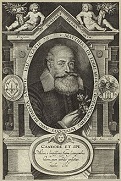
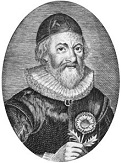
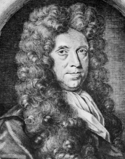

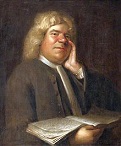









TLW's Botanistscope™ (Botanist Historyscope) |
By T.L. Winslow (TLW), the Historyscoper™ |
© Copyright by T.L. Winslow. All Rights Reserved. |
Original Pub. Date: Jan. 7, 2017. Last Update: Jan. 7, 2025. |

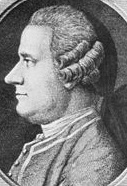

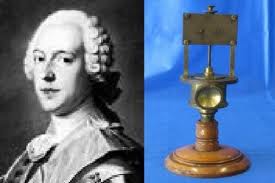
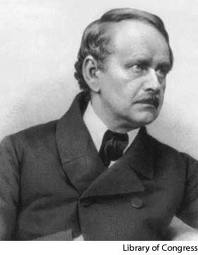
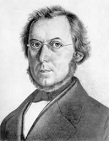




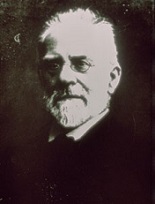

Westerners are not only known as history ignoramuses, but double dumbass history ignoramuses when it comes to botany and botanist history. Since I'm the one-and-only Historyscoper (tm), let me quickly bring you up to speed before you dive into my Master Historyscope.
In 1216 Seville, Spain-born Andalusian Muslim scientist Abu'l Abbas al-Nabati (1166-1239) pub. Botanical Journey, a work on botany covering plants from the Atlantic to the Red Sea, earning him the name al-Nabati (the Botanist).


In 1544 Bolognese physician-botanist Luca Ghini (1490-1556) creates the first known Herbarium (Hortus Siccus) in Pisa, gluing dried plants to cardboard; in 1554-8 he is succeeded by Italian physician-botanist Andrea Cesalpino (1519-1603), who is later called to be a prof. of medicine at the U. of Rome and physician to Pope Clement VIII, trying to figure out the circulation of the blood by explaining it as due to repeated evaporation and condensation, getting closer to the truth than anybody until William Harvey, pub. Quaestionum Peripateticarum in 1571; in 1593 he follows with Queaestionum Medicarum (2 vols.), which discusses the circulation of the blood but fails to form any clear picture. In 1596 he pub. De Metallicis (3 vols.) (Rome), a work on chemistry, mineralogy, and geology, showing a correct understanding of fossils, and anticipating some of the discoveries of Antoine Lavoisier and Rene Just Hauy.
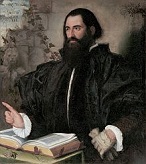
In 1544 the cultivation and consumption of the tomato (golden apple) is first described in European lit. in a herbal by Siena, Italy-born physician-botanist Pietro Andrea Gregorio Mattioli (Matthiolus) (1501-77).

In 1554 Italian naturalist ("Father of Natural History Studies") Ulisse Aldrovandi (1522-1605) (author of the first book on fishes that doesn't lump them with other aquatic forms, and founder of the first botanical garden in Europe in Bologna) pub. the 17-vol. Herbarium, becoming the biggest herbarium of the cent.

In 1576 Flemish physician-botanist Carolus Clusius (1526-1609) pub. a treatise on the flowers of Spain and Portugal, founding Modern Botany.
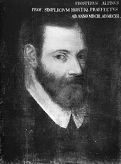
In 1591 Italian Venetian botanist-physician Prospero Alpini (1553-1617) pub. De Medicina Egyptiorum (Venice), becoming the first account of the coffee plant pub. in Europe, describing a coffee tree he saw in the garden of the capt. of the Janissaries in Constantinople; hefollows next year with De Plantis Aegypti liber, introducing several new plant species to Europe, incl Abrus, Abelmoschus, Lablab, Melochia, Baobab, and Sesban.

In 1591 Flemish botanist-physician Mathias de Lobel (l'Obel) (1538-1616) pub. Icones stirpium, seu, Plantarum tam exoticarum, quam indigenarum :in gratiam rei herbariae studiosorum in duas partes digestae : cum septem linguarum indicibus, ad diuersarum nationum vsum (Images of plants, both exotic and native, for students of botany, arranged in two parts: with indices in seven languages for the use of different nationalities), which becomes the first attempt to classifly plants according to their natural affinities rather than medical uses.

In 1640 English botanist John Parkinson (1567-1650) (royal botanist to Charles I) pub. Theatrum Botanicum; most complete English herbal to date, last by an Englishman in the herbalistic as opposed to botanical tradition; recommends goat's rue (French lilac) (Italian fitch) (professor weed) (Galega officinalis or bicolor) for several medical conditions, but not diabetes, although it had long been used as a remedy for frequent urination; it later becomes the source of the wonder drug Metformin (Glucophage).
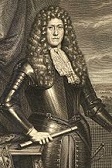
In 1678-91 Hortus Malabaricus (Lat. "Garden of Malabar") (12 vols.) is pub. in Amsterdam, along with a trans. by K.S. Manilal in Kerala; compiled by 25 people working for Dutch East India gov. of Dutch Malabar (1669-76) Hendrik Adriaan van Rheede tot Drakenstein (1636-91), and edited by 100+ experts, containing descriptions and drawings of 740 medicinal plants there, incl. cannabis and the joys of smoking it.

In 1682 English botanist Nehemiah Grew (1641-1712) pub. Anatomy of Plants (4 vols.), containing the first microscopic description of pollen, founding plant anatomy. In 1695 he isolates magnesium sulfate (Epsom salts) from water taken from North Downs springs in you know where.

In 1694 German botanist Rudolph Jacob Camerarius (1665-1721) discovers the function of plant pollen.

In 1694 Aix-en-Provence-born Jesuit-educated French botanist Joseph Pitton de Tournefort (1656-1708) pub. Elements de botanique, ou Methode pour reconnaitre les Plantes (Eléments de botanique, ou Méthode pour reconnaître les Plantes), with illustrations by French artist Claude Aubriet (1651-1742), becoming a hit despite shortcomings incl. failing to separate monocots from dicots, and phanerogams from cryptogams, making a clear distinction between genus and species, dividing 7K plant species into 700 general (paving the way for Carl Linnaeus?), coining the term "herbarium". In 1701 he discovers ammonium chloride on a 1700-2 trip through Greece, Constantinople, the Black Sea, Armenia, and Georgia with German botanist Andreas Gundelsheimer and artist Claude Aubriet, writing "Relation d'un voyage du Levant", which is pub. posth. after he is killed by a carriage in Paris on a road in the 5th Arrondisement that is later named Rue de Tournefort.

In 1696 French botanist-monk Charles Plumier (1646-1704) first describes the Fuchsia genus of flowering plants that he discovered; named after German botanist Leonhart Fuchs (1501-66).

In 1696 English naturalist John Ray (1627-1705) first describes the aromatic herb peppermint - and how it goes good with chocolate?

In 1717 the hybridization of Dianthus is reported in Britain by English gardener Thomas Fairchild (1667-1729) of Hoxton, East End, London, who crosses a Sweet William (Dianthus barbatus) with a Carnation Pink to create Fairchild's Mule, the first artificial hybrid.
In 1721 English botanist Richard Bradley (1688-1732) pub. A Philosophical Account of the Works of Nature, which covers the "mineral, vegetable, and animal parts of the Creation", plus an account of gardening in Britain, getting him appointed Cambridge U.'s first prof. of botany in 1724, going on to pioneer the biological theory of infectious disease while pub. works on greenhouses and the first cookbook in English with recipes using pineapple; in his coverage of humans, he claims that there are "five sorts of men" based on skin color, incl. white Euros with beards, white Native Americans sans beards, men with copper skin, small eyes, and black hair; blacks with straight hair, and blacks with curly hair; later used by Curly, er, Carl Linnaeus?

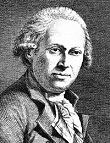

In 1735 Swedish botanist Carl Linnaeus (1707-78) pub. Systema Naturae, which describes his binomial nomenclature classification system for flora, extending it to fauna in the 10th ed. (1758). In 1751 he pub. Philosophia Botanica, the first textbook on systematic botany and botanical Latin. In 1753 he first distinguishes plants via species and genera, causing him to become known as "the Father of Taxonomy". In 1766-8 he pub. the 12th (last) ed. of Systema Naturae, containing a classiication of five "varieties" of the human species, possessing physiognomic characteristics "varying by culture and place", incl. Americanus (red, choleric), Europeanus (white, sanguine), Asiaticus (yellow, melancholic), Africanus (Afer) (black, phlegmatic), Monstrosus (mythologic humans) incl. Homo anthropomorpha (troglodyte, satyr, hydra, phoenix); in 1788-93 German botanist Johan Friedrich Gmelin (1748-1804) posth. pub. the 13th ed.

In 1779 Dutch chemist-biologist Jan Ingenhousz (1730-99) discovers that plants need carbon dioxide, and that they need light in order to produce oxygen.
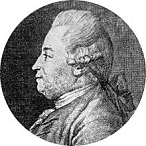
In 1783 Danish naturalist Otto Friedrich Mueller (Müller) (1730-84) becomes the first to describe Diatoms.

In 1801 Scottish botanist Robert Brown (1773-1858) arrives in Western Australia in Dec. aboard the Investigator, captained by Matthew Flinders (1774-1814), and spends 3.5 years collecting 3.4K species, 2K of them new; too bad, the Porpoise wrecks on his return voyage in 1805, and he loses much of his collection, but still saves 1.2K new ones, pub. them in 1810.

In 1837 Sauquot, N.Y.-born Harvard botany prof. Asa Gray (1810-88) pub. A Natural System of Botany, or A Systematic View of the Organization, Natural Affinities, and Geographical Distribution of the Northern United States In 1848 he pub. A Manual of the Botany of the Northern United States, from New England to Wisconsin and South to Ohio and Pennsylvania Inclusive, which becomes the #1 U.S. botany manual, going through 6 eds. during his lifetime and reaching the 8th ed. by 1850 as "Gray's Manual of Botany", proposing the Asa Gray Disjunction, the surprising morphological similarities between E Asian and E North Am. plants. In 1857 he pub. First Lessons in Botany and Vegetable Physiology, the first botany textbook? In 1887 he pub. The Elements of Botany for Beginners and for Schools. He goes on to become the #1 Am. botanist of the 19th cent.

In 1838 German botanist Baron Matthias Jakob Schleiden (1804-81) pub. "Failures to Contribute to Phytogenesis", announcing that plants are composed of cells.

In 1838 French engineer-physicist Charles Cagniard de la Tour (1777-1859) theorizes that yeast is composed of tiny living spherules which bud and produce more spherules.

In 1844 German botanist Hugo von Mohl (1805-72) identifies and names protoplasm as the source of movements in the nucleus.
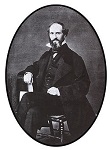
In 1849 English botanist Richard Spruce (1817-93) begins an expedition to South America (ends 1864), discovering yage (ayahuasca), the hallucinogenic drink used by Amazonian tribes that is prepared from the bark of giant flowering vines (Banisteria caapi).

In 1862 German botanist Julius von Sachs (1832-97) discovers that starch is produced by photosynthesis.

In 1867 Swiss botanist Simon Schwendener (1829-1919) pub. the theory that lichen is formed of a fungus and an alga, which is at first rejected.

In 1875 -8 German botanist August Wilhelm Eichler (1839-87) pub. Bluthendiagramme (Blüthendiagramme) (2 vols.), announcing the Eichler System, which classifies the spermatophytes (seed-producing plants) of the plant kingdom into the subkingdoms of non-floral cryptogams (Gr. "kryptos" + "gameo"= hidden + marry (hidden sexual organs)), and land-based more advanced floral phanerogams (Gk. "phaneros" = visible) (visible sexual organs), becoming the first phylogenetic classification , i.e., incorporating the concept of evolution; he subdivides the phanerogams into angiosperms and gymnosperms, and the angiosperms into monocotyledons and dicotyledons.

In 1877 Danish botanist (mycologist) Emil Christian Hansen (1842-1909) becomes head of the lab at Carlsberg Brewing Co. in Copenhagen, becoming the first in 1881 to classify brewer's yeast into bottom-fermenting lager strains (saccharomyces uvarum or Carlsbergensis) and top-fermenting ale strains (saccharomyces cerevisiae); in 1882 he tops Pasteur by mandating that brewers yeast not only be free of bacteria but from wild yeast strains, developing a practical technique for cultivating pure yeast strains from a single cell in 1890.


In 1937 Dutch botanist Frits Warmolt Went (1903-90) pub. the theory that the plant hormone Auxin helps plants bend toward the light; Soviet scientist Nikolai Grigoryevich Cholodny (1882-1953) independently pub. the same theory; proved in 2013. In 1948 Went founds the USDA Nat. Center for Genetic Resources and Preservation (originally the Earhart Plant Research Lab, later the Phylotron enclosed research greenhouse) with 2.4K glass tubes containing 120 dried seed types from native Calif. plants; in 2015 it moves to Colo. State U. in Fort Collins, becoming known as the Fort Knox of Plants; its 0F vault holds 600K seed samples each containing 3K dried seeds, which can survive for 100-400 years.